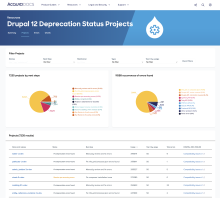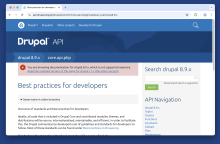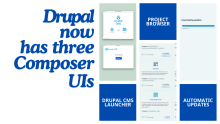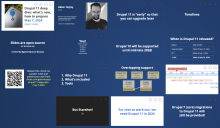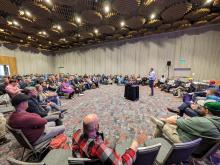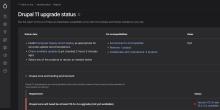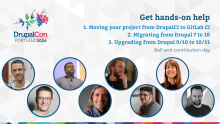I presented my first ever Drupal 11 deep dive session at DrupalCon Portland 2024 last week. It turned out to not just be about Drupal 11 but also about Starshot and even about Drupal 12 thanks to the coolest future-proofing technology I announced in this talk. Unfortunately not all of the attendees fit in, that wanted to attend, as the room was standing space only and many turned around and left. But here we go!
I strongly believe in open content. I came to open source from open content 24 or so years ago. So in good tradition, I built this slide deck on slides.com in way that is easy to share and fork. You can create your own or present directly from my deck with my speaker notes. The content is licensed with a Creative Commons license. I'll keep updating this slideshow, but under different URLs, so people can catch the latest edition of this presentation at Drupal Devdays Burgas next month for example. See some of you there!
If you can't make it there or plan to present this at your organization or meetup in the meantime, check out the open source slides.
The recording from DrupalCon Portland is below. Unfortunately I was not well prepared with a subtitling set up. I am exploring good tools and will do better next time! The conference tech crew tried to help in the middle of the session, but unfortunately they could not make it work either. At least managed to discuss some current Starshot questions while that was attempted. I promised a video with subtitles, which turns out Youtube nicely delivered, so I will not create a separate recording now. Hope this helps!
